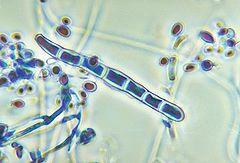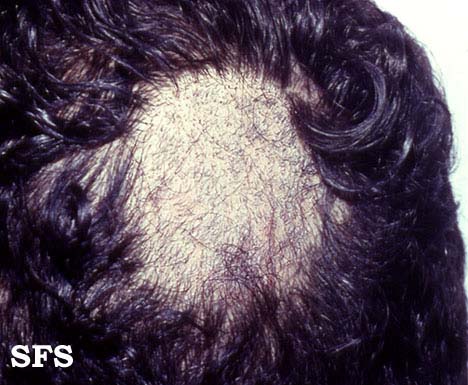Antifungal Medication – Drugs for Deep and Skin Fungal Infections
Types of Antifungals
Antifungal drugs can be divided broadly into medications for systemic and superficial fungal infections. Systemic drugs are used for deeper lying infections which can only be reached by drugs traveling in the bloodstream. There is no specific site that is targeted but rather the distribution is essentially through the whole body. Drugs for systemic (deep) fungal infections include :
- Amphotericin B
- Flucytosine
- Azoles
- Echinocandins
Drugs for superficial fungal infections include both oral and topical medication. These drugs are mainly developed for fungal infections of the skin and the tissue just underneath it (subcutaneous). Oral drugs are mainly in the form of tablets and capsules that are taken through the mouth, travel through the bloodstream and reach the skin to target these infections. Topical applications include creams, ointments, lotions and gels.
- Oral medications include drugs such as terbinafine and griseofulvin.
- Topical medications include nystatin, topical azoles, topical allylamines and other topical drugs.
Systemic Antifungal Drugs
Amphotericin B
Amphotericin B is one of the antifungal medications with the broadest spectrum of action. It kills the fungi by altering the permeability of the fungal cell membrane by binding to ergosterol. Ergosterol is the predominant sterol in the fungal membrane. It is most important drug for the treatment of almost all life-threatening fungal infections. It is useful in serious systemic infections caused by fungi like Candida albicans, Cryptococcus, Histoplasma, Blastomyces, Coccidioides and Aspergillus.
Amphotericin B is usually given by slow intravenous infusion. It is ineffective orally in most fungal infections except for fungal infections involving gastrointestinal tract. The amount of drug reaching the central nervous system (CNS) is minimal following intravenous injections and these drugs may be given directly into the cerebrospinal fluid (intrathecally) to treat fungal infections of the CNS. This approach is less tolerated and less frequently used at present. It may also be used topically as bladder irrigation in urinary bladder infections, as direct local injections in fungal infections of joint cavities or in fungal infections of eye.
Adverse reactions
Amphotericin B administration is often associated infusion-related reactions consisting of fever with chills, vomiting, and hypotension. Use of amphotericin B is often limited by dose-dependent cumulative renal (kidney) toxicity. Renal toxicity is sometimes associated with anemia. Liposomal preparations of amphotericin B which are less toxic to kidneys are currently available but are much more expensive than regular preparations. Amphotericin B is more frequently being replaced by newer safer medications as a result of prominent renal toxicity.
Flucytosine
Flucytosine is an oral antifungal drug with a limited spectrum of action. It is active against candida and cryptococcus. Flucytosine is converted by fungal cells to a metabolite which interferes with fungal DNA and RNA synthesis. Most fungi develop resistance to flucytosine if used alone. The drug is used less frequently at present and is always used in combination with drugs like amphotericin B to prevent development of resistance. Flucytosine can reach excellent concentration in CNS and hence it is of use in combination with amphotericin B or azoles in CNS infections like cryptococcal or candidal meningitis.
Adverse effects
The adverse effects of flucytosine result formation of 5-fluorouracil which has anticancer activity. Side effects include bone marrow toxicity like anemia, leukopenia and elevated liver enzymes. Toxicity is more pronounced in AIDS patients and those with renal insufficiency.
 |
| Picture of Trichophyton rubrum, a type of fungus that causes fungal skin infections such as athlete’s foot, jock itch, body ringworm and hand fungus. |
Azoles
Azoles represent a continuously expanding class of antifungal drugs which exerts its action by inhibition of synthesis of ergosterol in the fungal cell wall. Azoles are currently the most popular antifungal medications. Azoles generally have a broad spectrum of action. It can against dermatophytes (skin fungi excluding yeasts), Candida, Cryptococcus, Aspergillus, Histoplasma and Blastomyces species. Ketoconazole, miconazole, clotrimazole, itraconazole, fluconazole, voriconazole, and posaconazole are some of the important azoles in clinical use. Some of the newer azoles are also useful in life threatening fungal infections and are slowly replacing amphotericin B.
Itraconazole, fluconazole, voriconazole, and posaconazole are used only systemically while other azoles are mostly used only topically. Azoles are generally known to cause mild hepatic impairment and drug interactions.
- Ketoconazole can inhibit steroid synthesis in the body unlike other azoles and is associated with considerably higher incidence of side effects than other azoles when taken systemically. Use of ketoconazole at present is mostly confined to topical indications.
- Itraconazole is often the preferred treatment in ringworm (dermatophyte infections like tinea pedis, ), mucocutaneous candidiasis and in serious infections caused by histoplasma, blastomyces, and sporothrix. It is also useful in febrile neutropenia which is not responding to antibacterial drugs. Itraconazole can cause increase in the liver enzymes and cause drug interactions. Itraconazole is given intravenously or orally with food.
- Fluconazole has excellent penetration to CNS compared itraconazole and is useful in CNS fungal infections like cryptococcal and coccidioidal meningitis. Other uses of fluconazole include mucocutaneous candidiasis and ringworm infections. Fluconazole is also useful in prevention against fungal infections in high risk individuals like extremely low CD4+ AIDS patients. Fluconazole is safest among the azoles. It has least toxic effect on liver and it causes minimal drug interactions. Occasionally it can cause hair loss, dry mouth and muscle weakness. Fluconazole is available for oral or intravenous use.
- Voriconazole is considered as the drug of choice in aspergillosis and is active against various candida species. Adverse effects of voriconazole include temporary blurring of vision and color vision abnormalities during intravenous infusion, rashes, potential drug interactions and hepatotoxicity. Voriconazole is also available for oral and intravenous use.
- Posaconazole has one of the broadest spectrums among the azoles. It is useful in infections of most candida species, mucor and aspergillus. It is also useful in prevention of fungal infections in severely immunosuppressed individuals. Posaconazole is available only as an oral liquid formulation which is taken with high fat meals.
Echinocandins
Caspofungin, anidulafungin, and micafungin are currently available echinocandins. Echinocandins inhibit an enzyme called 1,3-glucan synthase which is critical for synthesis of cell wall in fungi. Echinocandins currently in use are available only for intravenous use. It is highly effective against candida and aspergillus. Echinocandins are useful in systemic infections by different species of candida and invasive aspergillus infections. Echinocandins are safest among the antifungal agents and are associated with minimal toxicity like flushing and minor gastrointestinal disturbances.
Superficial Oral Antifungal Drugs
There are several oral antifungal drugs to treat superficial fungal infections. Some of these drugs such as griseofulvin and terbinafine are only indicated for superficial infections. Other drugs like the azoles are also used for systemic (deep) infections. Azoles like fluconazole or itraconazole in particular may be used to treat superficial candida infections or dermatophyte infections with good results.
 |
| Scalp ringworm is a superficial fungal infection of the skin on the scalp. Ringworms are caused by skin fungi known as dermatophytes. Other common fungal infections of the head caused by Malassezia furfur (Pityriasis ovale) for example which is an yeast. |
Griseofulvin
Griseofulvin is having activity only against dermatophytes and is useful only in ringworm infections. It is given orally and its absorption is better when taken with fatty meal. Adverse effects of griseofulvin include allergic reactions and hepatitis and it can also cause drug interactions with drugs like warfarin. Griseofulvin is less frequently used at present due to the side effects and the need for prolonged therapy for adequate response to treatment. Terbinafine or azoles (topical or oral) are preferred over griseofulvin for treatment of ringworm infection.
Terbinafine
Terbinafine is an allylamine derivative available for oral use in dermatophyte infections including the highly resistant fungal infections of nails (onychomycosis). Terbinafine kills the fungi by inhibiting ergosterol synthesis. It is more effective than azoles or griseofulvin in onychomycosis. Adverse effects are rare with terbinafine and usually limited to head ache and gastrointestinal disturbances. Occasionally it can cause hepatotoxicity.
Topical Antifungal Drugs
Topical antifungal agents are usually used to treat dermatophyte infections, tinea versicolor and candida infections (cutaneous, oral and vaginal). Topical agents may be used as creams, ointments, vaginal pessaries, oral troche, or shampoo.
Topical azoles
Azoles are the most widely used topical antifungal drugs. Most of the preparations are available over the counter. The topical azoles include clotrimazole, miconazole, sulconazole, oxiconazole, ketoconazole, tioconazole etc. Clotrimazole and miconazole are most commonly used among them. Topical azoles are used in oral, vaginal or cutaneous candidiasis and ringworm infection. Antifungal ketoconazole shampoo is also available for treatment of tinea versicolor and seborrheic dermatitis. Topical azoles are well tolerated and are associated with negligible side effects.
Nystatin
Nystatin is an antifungal drug similar to amphotericin B. Its use is limited topically due to high toxicity associated with systemic use. Nystatin is useful only in candida infections of skin or mucous membranes. It may be used in the form of ointments, creams, or pessaries. Topical use of nystatin is associated with minimal side effects.
Topical allylamines
Allylamines like naftifine and terbinafine are available as topical creams for treatment of ringworm infection. Topical allylamines are effective alternative drugs for azoles against dermatophytes.
Other topical agents
A wide range of other medications are available as topical antifungal agents. The other topical antifungal medications include tolnaftate, benzoic acid, ciclopirox olamine, undecylenic acid and halprogin. Some of these medications like tolnaftate, benzoic acid and undecylenic acid are effective against dermatophytes alone while others are additionally effective against candida.





